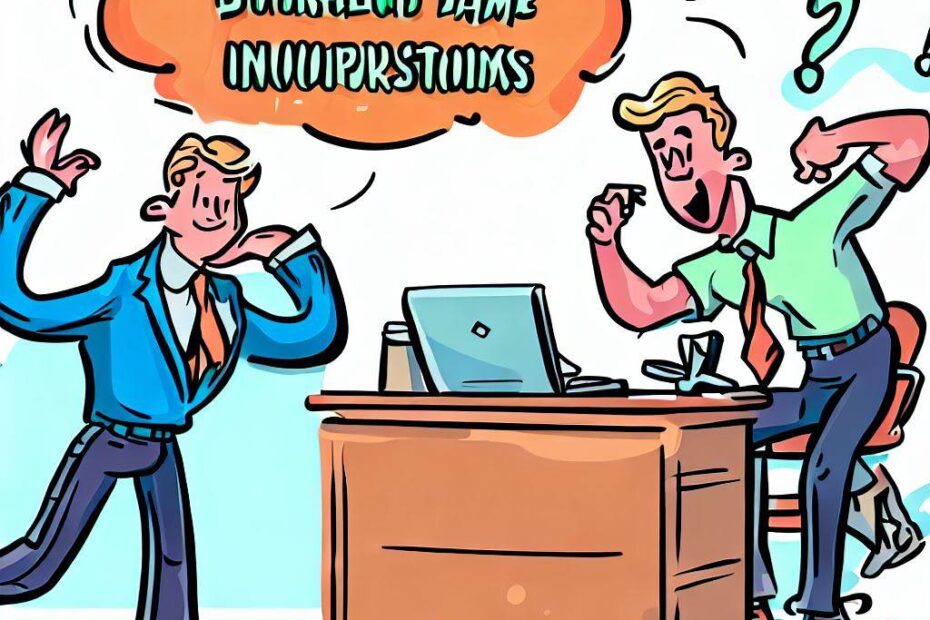Effective salespeople anticipate and handle navigating client doubts while achieving positive outcomes in sales. In the world of sales, we often tend to focus on positive responses like “yes” and “maybe,” but frequently overlook the significance of hearing “no.” In fact, many salespeople are afraid of hearing “no,” and would rather linger in the uncertainty of “maybe-land” than venture into the potentially scary world of “no.” However, embracing a culture of “no” can actually be extremely beneficial for both salespeople and clients.
One way to embrace a culture of “no” is by using the concept of “NO-FOR-NOW.” This approach involves recognizing that a “no” doesn’t have to be a permanent rejection, but instead can be a temporary resting place. By acknowledging this, salespeople and clients may be more willing to use “NO-FOR-NOW” as a stepping stone toward eventually achieving a “yes.”
Another benefit of “NO-FOR-NOW” is that it allows salespeople to uncover negative issues that may not have been revealed in the uncertain world of “maybe-land.” By discovering the reasons behind a “no-for-now,” salespeople can address these issues and work toward a solution that could ultimately lead to a “yes.” Alternatively, if the issues cannot be resolved, both parties can move on to a more permanent rejection.
Using “NO-FOR-NOW” can also help keep pipelines clean and flowing smoothly, as it is a powerful flushing strategy. By getting inside the client’s mind and seeing reality, salespeople can address core issues that may have been left unspoken. This clears the air and allows everyone to reset the table, leading to a more productive working relationship in the future.
In terms of sales training, many salespeople are taught to pursue a commitment, which usually means getting a “yes.” However, it’s important to recognize that a commitment can also be a “no,” and that hearing “no” is okay. In fact, it’s often better than hearing “maybe” or “we’re thinking about it.” This allows everyone to move forward with clarity and a better understanding of what needs to change in order to achieve a successful outcome.
To facilitate this process, the use of mini-steps can be helpful. These small steps in the sales process can lead to more direct closing questions and ultimately more closing opportunities. By breaking down the process into smaller, manageable tasks, salespeople can create a sense of momentum and increase the chances of achieving a successful outcome.
Embracing a culture of “no” can be extremely beneficial for both salespeople and clients. By using the concept of “NO-FOR-NOW,” salespeople can uncover negative issues, keep pipelines clean, and eventually work toward a successful outcome. It’s important to recognize that a commitment can also be a “no,” and that hearing “no” is okay. Finally, by using mini-steps, salespeople can create a sense of momentum and increase their chances of success.
Uncovering the Real Obstacles: Navigating Client “No’s” to Achieve Successful Sales

When dealing with potential clients, it is important to remain skeptical of their initial reasons for saying “no” to your proposal. Common excuses such as lack of funds or time may be used as a smokescreen for deeper issues that the client is not comfortable sharing with you. Therefore, it is essential to push further to identify the root cause of the problem.
One way to do this is to respond to the client’s initial objection by acknowledging their concerns while simultaneously expressing your intuition that there may be more to the issue. This could be done by stating something like: “I appreciate that, Ms. Client. However, I’m sensing some other issues, because even if you HAD the money (or HAD the time), I don’t think you’re ready to move forward with our company. How accurate is that?”. This approach allows you to open up a dialogue and potentially uncover other issues that are affecting the client’s ability to move forward with your company.
If the client still says no, then it is perfectly fine to accept that as their final answer, but it is also important to know when to stop pursuing them. This allows you to focus on other potential clients instead of wasting time and resources on someone who is unlikely to convert. On the other hand, sometimes a “no” can present an opportunity to work on improving your offer or addressing any issues that may have been holding the client back from working with you.
If the client provides specific reasons for not proceeding, it is crucial to take note of those reasons and investigate whether they are valid. One strategy for doing this is to actively seek out more information from the client by asking them to explain in detail what specifically is preventing them from saying yes. It is important to listen carefully without interrupting or becoming defensive, as this will allow you to gain a better understanding of their underlying concerns.
Once you have identified the main concern, it is time to employ a strategy called “Going to the Movies.” This involves asking the client to imagine what it would be like to purchase your product or service and discussing their thoughts and feelings about this imaginary experience. This technique can help you understand the client’s mindset and identify ways that you can improve your offering to better meet their needs.
When dealing with potential clients who say no, it is important to remain skeptical of their initial reasons and push for further clarification. It is also essential to know when to stop pursuing them, while also taking note of any valid concerns they raise. By using strategies such as “Going to the Movies,” you can gain a better understanding of the client’s perspective and work towards addressing any issues that may be holding them back from working with you.
Consultative Closing: The Power of Perspective

In sales, there is a common phenomenon that many professionals refer to as the “bad movie.” This refers to the negative perceptions and concerns that clients may hold about a particular product or service that you are trying to sell. These negative perceptions can be so strong that clients may literally replay them in their minds like a bad movie, hindering their ability to see the potential benefits of your solution.
As a salesperson, it is your job to help shift clients out of this negative mindset so that they can see the value of what you have to offer. This is where consultative closing comes into play. By engaging with clients in a consultative manner, you can help them shift their perspective and envision a more positive outcome, ultimately leading to a successful sale.
One key aspect of consultative closing involves acknowledging the client’s negative perceptions and concerns and then working to address them in a way that feels collaborative and empathetic. For example, if a client expresses concern about the cost of your product or service, you might acknowledge their concerns and then offer a solution that addresses those concerns directly.
But simply addressing your client’s concerns is not enough. To truly engage with them in a meaningful way, you need to connect with them emotionally. This is where the concept of the “bad movie” comes in. By acknowledging and empathizing with your client’s negative perceptions, you can create a deep sense of rapport and understanding that allows you to guide them towards a more positive mindset.
For example, when a client shares their negative perceptions with you, you might listen attentively and nod along in agreement. This shows that you understand where they’re coming from and that you’re on their side. As you continue to engage with them, you might even find that they start to open up more and share additional concerns or fears.
At this point, you can begin to introduce a new perspective by presenting the “good movie.” In this scenario, you present a more positive outcome that your client may not have even considered before. By doing so, you help them see the potential benefits of your solution in a new light.
Of course, introducing a new perspective is not always easy. Clients may be resistant to change or skeptical of your claims. This is where your skills as a salesperson come into play. By using softeners and other language techniques, you can help your client feel more comfortable with the idea of trying something new.
For example, you might say something like: “I can see why you wouldn’t be happy with that outcome, but let me ask you something. Let’s say you decide to go with our service, and you introduce it. Some folks are a little nervous about the roaming, but they see that the everyday charges are much less and there are fewer dropped calls, which in their mind makes up for the extra fees when roaming. Plus, the roaming fees actually encourage people to use their phones much more efficiently when traveling. What would your thoughts be?”
By using language like “let me ask you something” and “what would your thoughts be,” you create a feeling of collaboration and empowerment. This helps your client feel like they are part of the decision-making process and that their opinion is valued.
It is important to note that consultative closing is not a one-size-fits-all approach. Every client is different, and every situation requires a unique approach. However, by focusing on empathy, collaboration, and the power of perspective, you can engage with clients in a meaningful way that ultimately leads to success.
Consultative closing is a powerful tool for sales professionals looking to connect with clients and close deals. By acknowledging and addressing negative perceptions, introducing new perspectives, and using language that empowers and collaborates with clients, you can help shift their mindset towards a more positive outcome. While it may not be easy, the results can be incredibly rewarding both for you and your clients.
Navigating the Delicate Dance: Addressing Client Doubts to Achieve Sales Success

The art of sales can be tricky, especially when trying to navigate the delicate dance between a potential client’s doubts and your own desire to close the deal. In many instances, the client may express interest in your product or service but still harbor reservations about making a commitment. As a salesperson, it’s your job to address those concerns and steer them towards a positive outcome.
One common scenario is when a client expresses doubt about whether something truly works or can be accomplished. This is where the salesperson needs to step in and present a hypothetical situation where the product or service does work as described. The hope is that by presenting this alternate reality, the client will be able to envision a positive outcome and be more willing to commit.
Of course, this approach isn’t foolproof. It’s not uncommon for a client to respond with skepticism, saying that while it would be nice if things went according to plan, they simply don’t believe it’s possible. At this point, the salesperson needs to pivot and acknowledge the client’s doubts while still attempting to steer them towards a positive outcome.
One effective response to this objection is to ask what would happen if the hypothetical situation did come to pass. If everything worked as described, wouldn’t the client be willing to give it a try? By framing the conversation in this way, the salesperson is able to create at least two possible outcomes where there was only one before. This helps to keep the conversation moving forward and gives the client the space they need to seriously consider the opportunity.
At this stage, it’s important for the salesperson to acknowledge both the positive and negative aspects of the situation. For example, they might say something like, “I understand that you’re nervous about how the roaming fees will be received, but at the same time, you’re excited about the day-to-day savings and the significant reduction in dropped calls. Let’s make the switch to our service, and I’ll work closely with you to analyze the long-distance roaming charges and help you get that information out to your team in the field.”
It’s also crucial for salespeople to recognize that pushback from a client may mean one of two things. Either their hypothetical scenario wasn’t compelling enough to overcome their doubts, or there are deeper issues at play that need to be addressed before they can commit. In either case, it’s important to remain persistent without being pushy and to keep working towards a positive outcome.
One key aspect of this process is understanding the difference between a “maybe” and a “no.” If a salesperson believes that a maybe is essentially the same thing as a yes, they may become complacent and assume that the sale is a done deal. This can lead to a lack of motivation and ultimately hurt their chances of closing the deal. On the other hand, if they see a maybe as a no-for-now, they’ll be more inclined to work harder to identify and address the client’s concerns until they get a definitive answer one way or the other.
The art of sales is all about building relationships and navigating complex situations with finesse and skill. By understanding the client’s perspective, acknowledging their doubts, and presenting compelling hypothetical scenarios, salespeople can help steer clients towards positive outcomes. And by recognizing that a “maybe” is not the same thing as a “yes,” they can maintain their motivation and continue to work towards closing the deal, even in the face of resistance.
Conclusion
Navigating the delicate dance between a potential client’s doubts and your own desire to close the deal can be challenging. However, there are effective ways to address concerns and steer clients towards positive outcomes. One approach is to present compelling hypothetical scenarios that help clients envision a successful outcome. It’s also important to acknowledge both the positive and negative aspects of the situation and remain persistent without being pushy. Salespeople must recognize that a “maybe” is not the same as a “yes” and continue to work towards a definitive answer. By building relationships and using finesse, sales professionals can achieve success in even the most complex situations.
